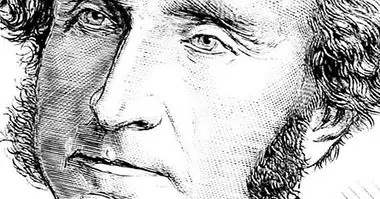The Premack principle: what it is and what role it plays in behaviorism
The principle of Premack arises in the context of operant conditioning and it sustains the existence of a psychological dimension that is determinant in the repetition or extinction of a behavior. This dimension is the value that the individual attributes to a particular event, which is generated through their interactions with said event.
This principle represented one of the great postulates of operant conditioning in the mid-twentieth century, since it established a break with the traditional definition of the "reinforcer", which had important consequences in learning models and studies of motivation.
- Related article: "Operant conditioning: concepts and main techniques"
The Principle of Premack: definition and origins
Between the years of 1954 and 1959, the American psychologist David Premack, and his wife and collaborator Ann James Premack, conducted different investigations on operant conditioning by analyzing the behavior of monkeys belonging to the cebus genus .
In the beginning, these investigations were carried out in the Laboratory of Primate Biology of Yerkes, located in the state of Florida. Then at the University of Missouri, state of Columbia; later in the University of California and finally in the University of Pensilvania.
The Premack hypothesis was the following: any answer A will reinforce any answer B, if and only if the probability of the appearance of response A is greater than that of response B . That is, they wanted to prove that a rare behavioral response can be reinforced by another response, as long as the latter implies a greater preference over the former.
Put another way, the principle of premack holds: if there is a behavior or activity that arouses little interest, most likely, this behavior does not occur spontaneously . However, if immediately after doing it, there is an opportunity to carry out another behavior or activity that does arouse interest, then the first one (the one that does not interest) will significantly increase its possibility of repetition.
- Maybe you're interested: "Behaviorism: history, concepts and main authors"
Contributions to operant conditioning
In Skinner's operant conditioning, reinforcers are stimuli that have the intrinsic property of increasing the incidence of a behavior. Thus, the very definition of "reinforcer" was given by its effects on behavior, with which, it was any stimulus that had the ability to increase a behavior whenever it was operant. This made that the reinforcer itself was at the center of the efforts for increasing any behavior.
But, when checking Primack's hypothesis, Skinner's theory of operant conditioning takes an important turn: far from functioning in an absolute way, the reinforcers work in a relative manner.
That is, the reinforcer does not matter in itself, what matters is how many response opportunities the individual offers. In this sense, what determines the effect of an event is the value that the subject attributes to the event itself . For this theory, the answers are central, so that what increases the appearance of a behavior is not so much "a reinforcer" as a series of "reinforcing events".
The theory of the deprivation of the answer
Subsequently, other experiments and research conducted in the context of operant conditioning, have called into question the functioning of the principle of Premack.
Among them is the theory of the deprivation of the answer. Broadly speaking, it suggests that there are situations in which the restriction of access to the reinforcing response, far from increasing the preference for the instrumental response, what it does is increase motivation by the first , and therefore the series of behaviors associated with it. In short, it suggests that the less you can access a behavior, the more motivation it generates.
The value according to this theory
According to Pereira, Caycedo, Gutiérrez and Sandoval (1994), given the importance that the principle of Premack attributes to the motivation generated by reinforcing events, one of the central concepts in the Premack principle is "value", whose definition It can be summarized and defined as follows:
The organisms order the events of the world according to a hierarchy of values .
The value is measured by the probability that an organism responds to a stimulus. In turn, the probability can be measured by the duration of interaction with said response.That is, the more time spent performing an activity, the greater the value that the activity has for the individual.
If an event that is more valued is presented immediately after another that is less valued, the behaviors of the latter are reinforced. Likewise, the least valued event and the behaviors that intervene in it acquire "instrumental" value.
If the opposite effect occurs (an event of lower value occurs immediately after a higher value), what happens is the punishment of instrumental behavior , that is, it decreases the probability that the least valued behavior is repeated.
Likewise, "value" is defined as a psychological dimension that individuals assign to events, as assigned other properties (size, color, weight, for example). In the same sense, the value is assigned according to the particular interaction that an individual establishes with the event.
It is this psychological dimension that determines the probability of occurrence or disappearance of a behavior, that is, the effect of reinforcement or punishment. Because of this, to ensure that a behavior occurs or expires , it is essential to analyze the value that the individual attributes to it.
This implies analyzing the interactions both present and previous of the individual with the event that wants to be reinforced, as well as the opportunities to generate other responses or events.
The experiment of pinball and sweets
To complete all of the above, we end by describing an experiment that David Premack and his collaborators carried out with a group of children . In the first part they were presented with two alternatives (which are called "answers"): eat a candy or play with a pinball machine.
In this way it was possible to determine which of these two behaviors are more likely to repeat for each child (and with this, the level of preference was determined).
In the second part of the experiment, the children were told they could eat a candy as long as they played with the pinball machine first. Thus, "eating a candy" was the answer reinforcement, and "playing with the pinball machine" was the instrumental response. The result of the experiment was the following: only the children who had a greater preference for "eating a candy", reinforced their behavior less likely or that caused less interest, that of "playing with the pinball machine".
Bibliographic references:
- Premack's Principle (2018). Wikipedia The Free Encyclopedia. Retrieved September 6, 2018. Available at //en.wikipedia.org/wiki/Premack%27s_principle.
- Klatt, K. and Morris, E. (2001). The premack principle, response deprivation, and establishing operations, 24 (2): 173-180.
- Pereyra, C., Caycedo, C., Gutierrez, C. and Sandoval M. (1994). Premack's theory and motivational analysis. Psychological Sum, 1 (1): 26-37.
- Premack, D. (1959). Toward empirical behavior laws: I. Positive reinforcement. Psychological Review, 66 (4): 219-233.



















